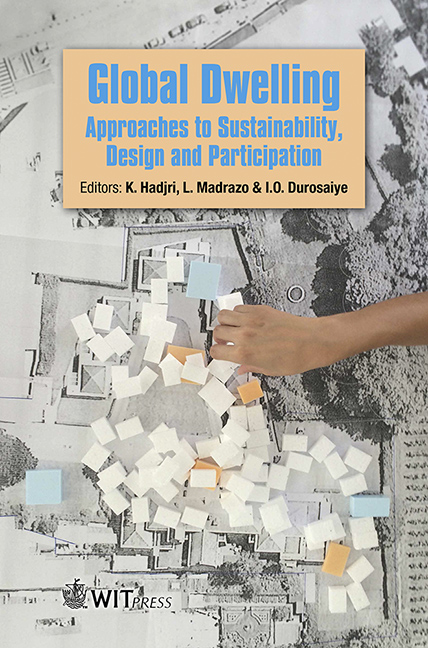Sustainability Issues In Low-middle Income Apartments In Urban Amman, Jordan: Heating Devices And Health Concerns
Price
Free (open access)
Transaction
Volume
193
Pages
12
Page Range
27 - 38
Published
2020
Size
425 kb
Paper DOI
10.2495/GD170031
Copyright
WIT Press
Author(s)
A. Younis, A. Taki, S. Bhattacharyya
Abstract
Energy security constitutes a major challenge for sustainable development of the Kingdom of Jordan. This has led the Ministry of Energy and Mineral Resources to integrate a comprehensive energy master plan for to develop the energy sector by 2029. Of the total residential energy consumption, 61 percent is consumed for heating spaces. Greenhouse gas (GHG) emissions produced by domestic stock in Jordan are anticipated to increase by 59 percent in 2018. Most households heat their houses using traditional devices such as portable unflued kerosene and liquefied petroleum gas (LPG) stoves. Combustion of such heaters generates toxic by-products causing symptoms and illness among residents as a result of poor indoor air quality. This paper discusses these issues in view of urban low-middle income apartments in the capital Amman, with a focus on investigating the types of stoves used and health implications associated with using them. A representative sample of 106 low-middle income households in urban Amman were surveyed, through semi-structured interviews, to explore how they responded to the environmental conditions. Results showed that unflued kerosene and LPG stoves were used for heating spaces by around 39 percent and 89 percent of the total households surveyed, respectively. It was also found that almost 65 percent of them used more than one device for heating their apartments. Furthermore, around 50 percent of those households reported different health problems related to asthma which could partially be due to the use of these heating devices. The field study also showed that almost 75 percent of households lived in apartments constructed with external envelopes of hollow cement blocks leading to poorer fabric performance. The paper concludes with calling for thrift retrofit interventions for existing low-middle income apartments and raising inhabitants’ awareness towards the proper use of stoves. This would enhance their thermal comfort, reduce carbon emissions and help improve residents’ quality of life, which eventually would contribute to ameliorating related health issues.
Keywords
sustainable development, urban Amman, low-middle income apartments, energy, GHG emissions, unflued stoves, health issues, retrofit





